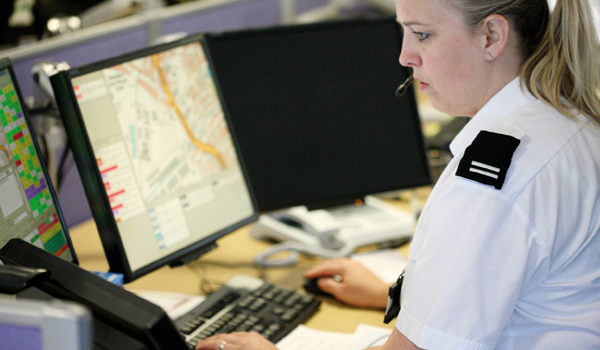World first as smartphone emergency service goes live
Fifty members of the public have used the revolutionary 999Eye service to send images of ongoing emergencies to West Midlands Fire Service (WMFS) in the first month since the smartphone system went live.
Fifty members of the public have used the revolutionary 999Eye service to send images of ongoing emergencies to West Midlands Fire Service (WMFS) in the first month since the smartphone system went live.
It is the first-ever smartphone solution that enables 999 callers, with compatible mobile devices, to securely send live footage or images of incidents to emergency service control rooms.
It works by sending 999 callers a text message with a secure link that opens a one-use-only connection between their devices camera and fire control. Depending on the type of smartphone, they will have the option to take and send photos, live-stream video, or both.
999EYE will also provide the emergency service with precise GPS (global positioning system) coordinates, helping to pinpoint the exact location of an incident.
This will enable control staff to quickly establish the severity of an incident and then ensure that response crews have been safely and efficiently dispatched to locations with the information they need.
Belived to be the first solution of its kind in the world, 999EYE is helping operators in Staffordshire and West Midlands Fire Control ensure that the most appropriate resources are sent to incidents. This could mean, for serious incidents, sending more fire appliances with crews of five firefighters. Or, in other circumstances, a brigade response vehicle (BRV) with a crew of three could be sent instead of a fully-crewed engine.
People in need of help still call 999 as normal, and there is no change to how firefighters are then mobilised based on the information given.
999EYE has been developed by WMFS in collaboration with messaging solution company PageOne, part of the Secure Digital Solutions division of Capita.
Although WMFS is the first emergency service to go live with the system, PageOne says the groundbreaking solution has the potential to deliver significant benefits across blue light services and the general public.
In addition to fire and rescue services, it says the technology could advance the way 999 calls are reported and dealt with by the police, ambulance services, the Maritime and Coastguard Agency and mountain rescue services across the UK.
The live footage can also provide more qualified information to partner agencies to help manage the incident more effectively, as well giving invaluable up-to-date information to blue light responding crews who have been mobilised to the incident, supplementing details initially taken from the 999 call.
It can also help identify hoax calls to ensure resources are mobilised only when necessary.
Raymond Fegan, national sales manager at PageOne, said: The team at Capita are delighted to have been involved in the development of this service in conjunction with WMFS and to be hosting it.
999Eye has already allowed the control room staff to re-assess if the initial response is appropriate, deliver further information to responding crews or, as in the case of a potential chemical incident, assess that no resource needed to be sent. All of this is thanks to the ability to have remote eyes on scene, avoiding responding resources being deployed.
The solution is secure, simple to use and of immense value to all blue light organisations. 999Eye has already won the BAPCO 2017 conference Product Innovation Award for the product that has the greatest impact on public safety communications.
Watch Commander Eddie Sammons, of WMFSs Research, Development, Technology and Innovation team, said, We believe were the first fire and rescue service in the world to use such technology. 999Eye gives us the added capability to confirm that were sending the most appropriate level and type of resources. It
shouldnt be long before were able to relay the images direct to the fire crews as theyre on their way, so they can be even better prepared when they arrive.



